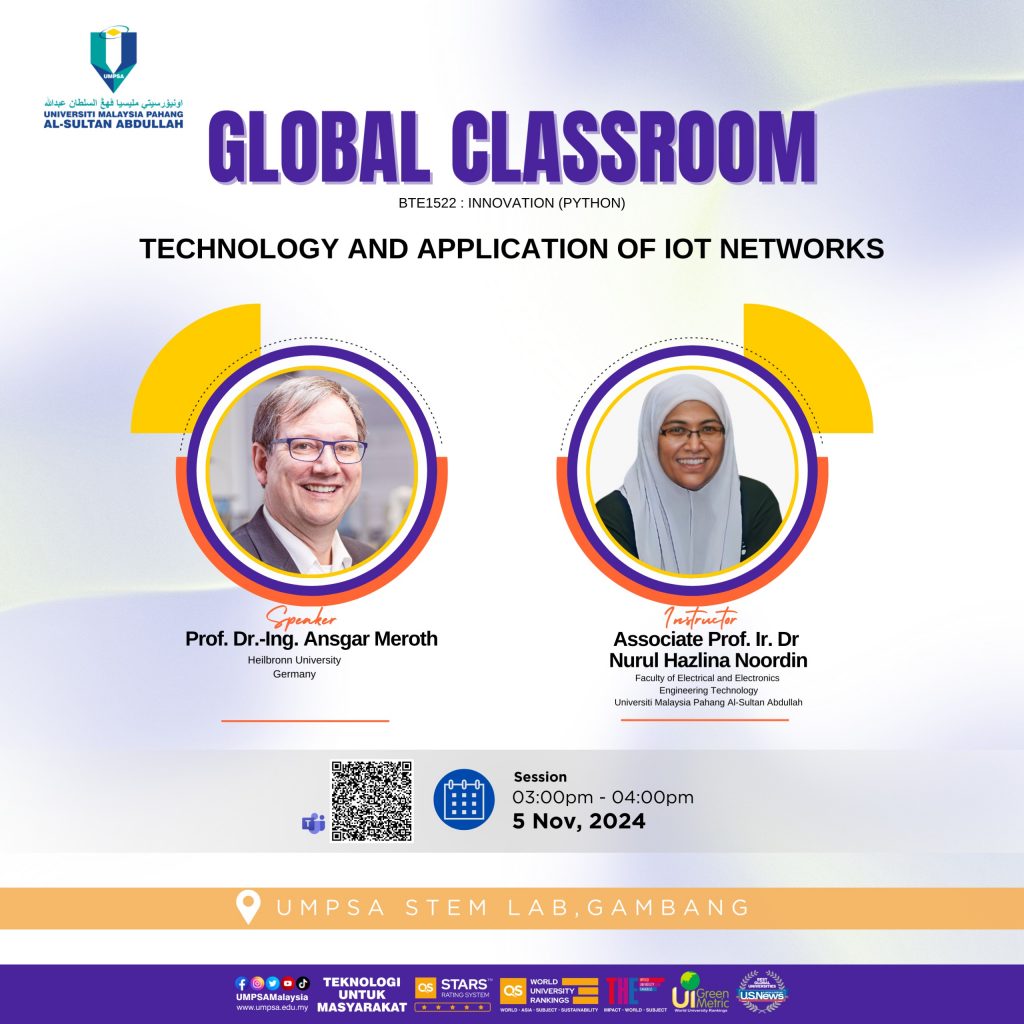
In the latest session of the Global Classroom Initiative for DRE2213 Programming and Data Structure and BTE1522 Innovation (Python Programming) students were privileged to attend a talk by Prof. Ansgar Meroth from Helbron University. Prof. Ansgar delivered a comprehensive overview of IoT networks, particularly as applied to agriculture. This talk aligned perfectly with our BTE1522 and DRE2213 course’s focus, as students in the DRE course gain hands-on experience in Python programming, Raspberry Pi programming, and embedded systems.
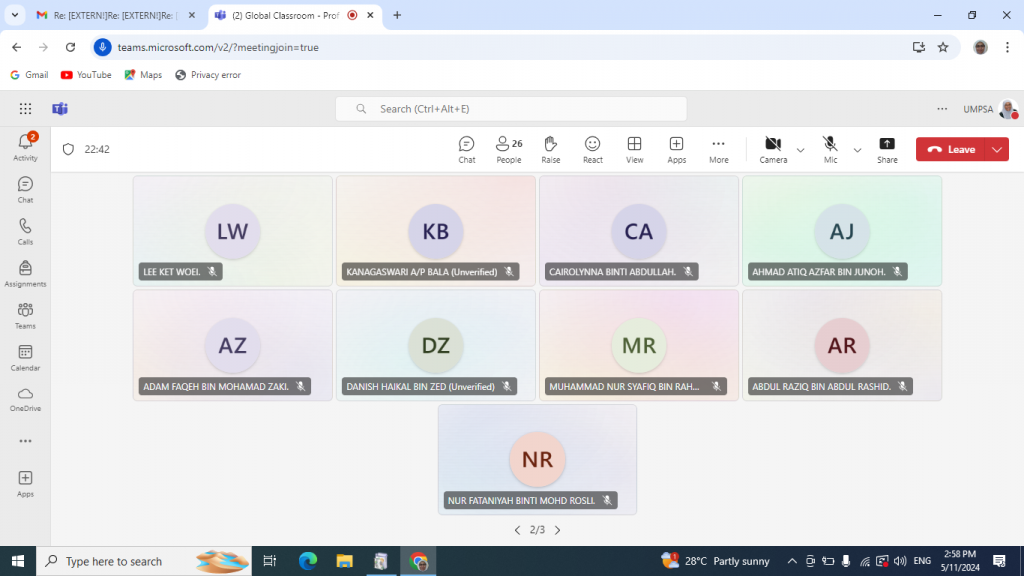
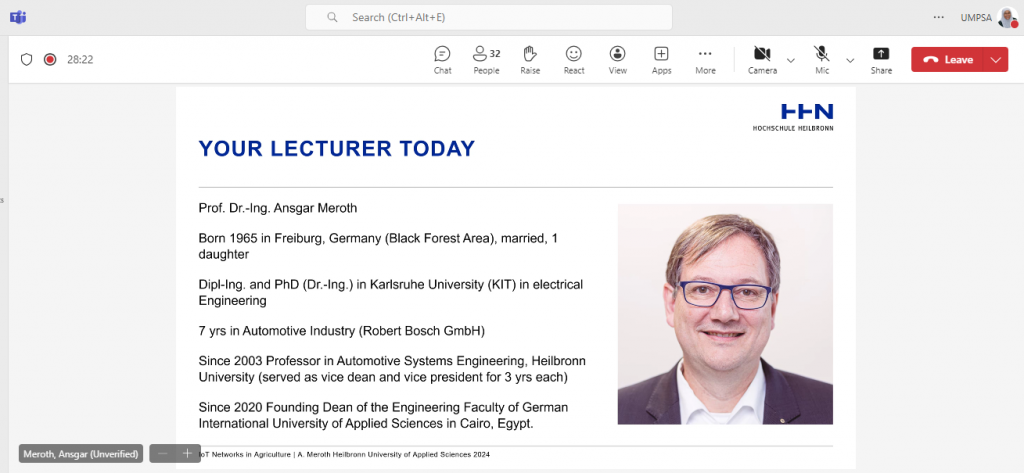
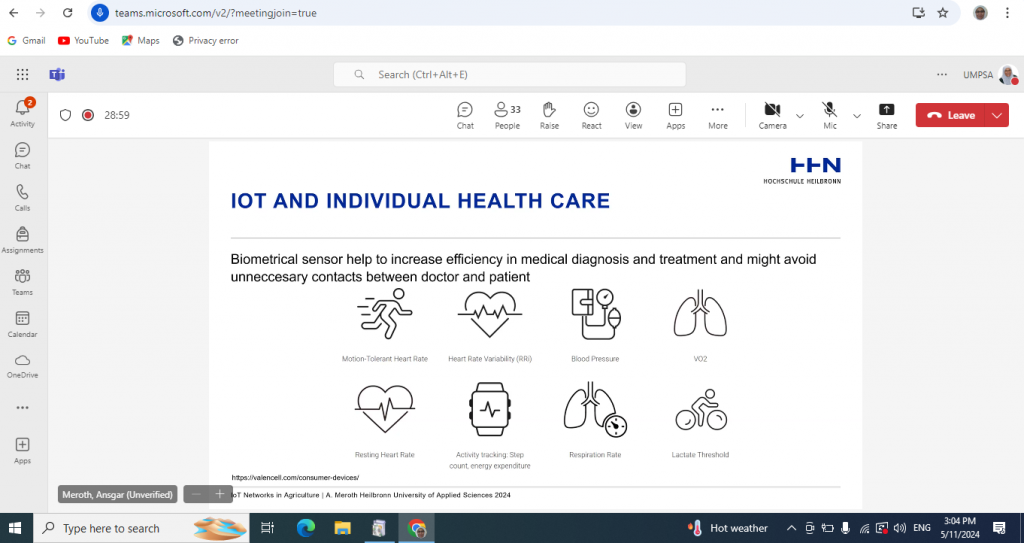
Prof. Ansgar’s lecture began with the foundational elements of IoT, including sensors, network architecture, and the various considerations in building robust IoT solutions. Moving deeper, he shared insights on the types of sensors used, architecture design choices, and a project demonstration from his own classes. The talk’s focus on agricultural IoT applications illustrated the immense potential of these technologies to transform farming through precision monitoring and automation.
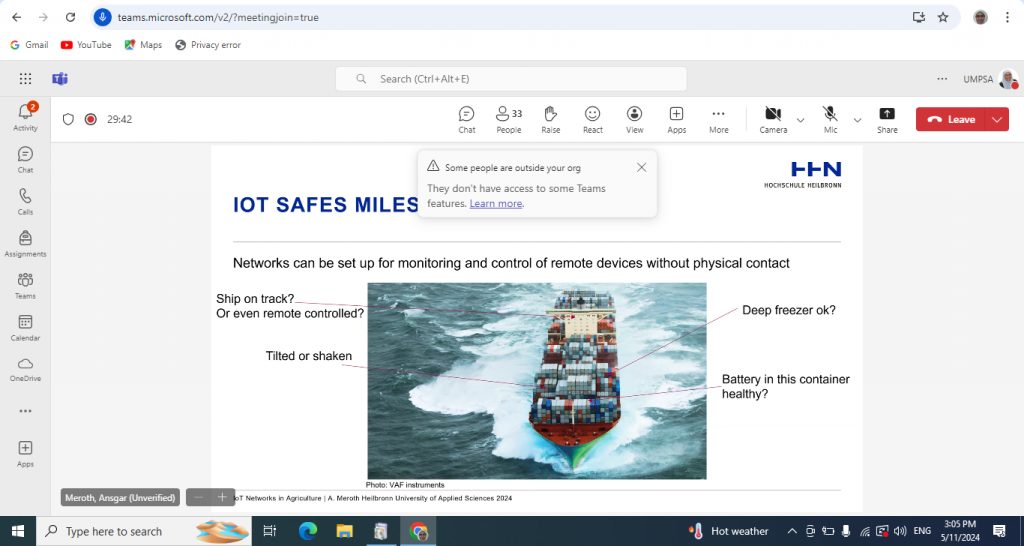
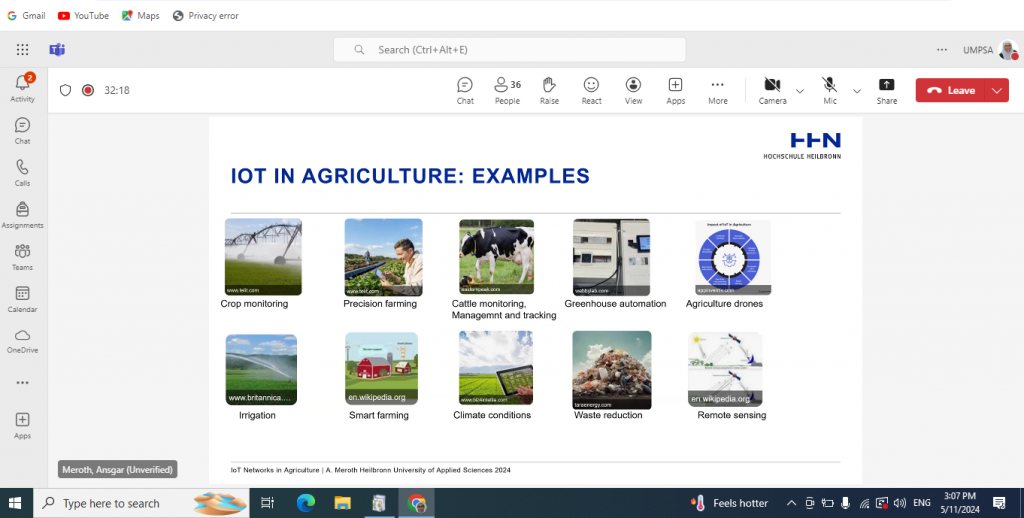
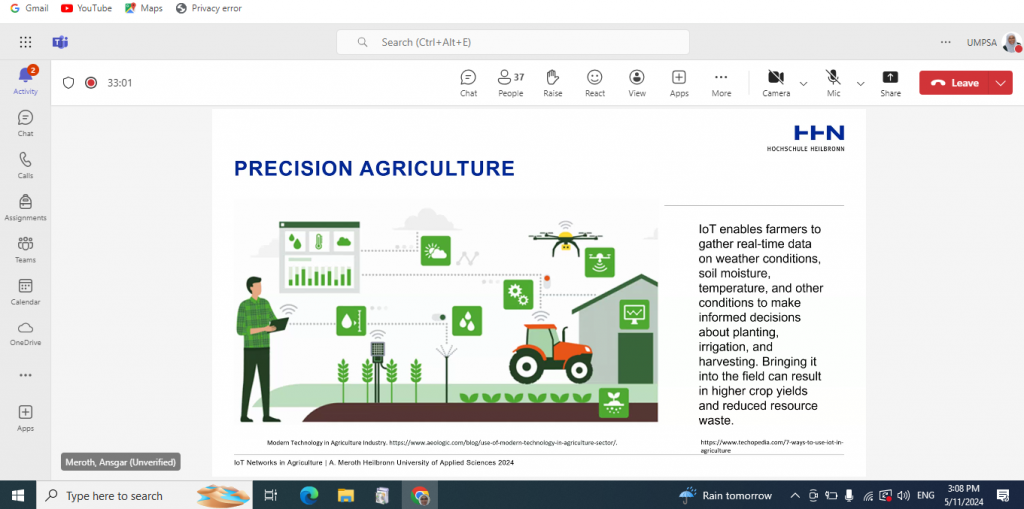
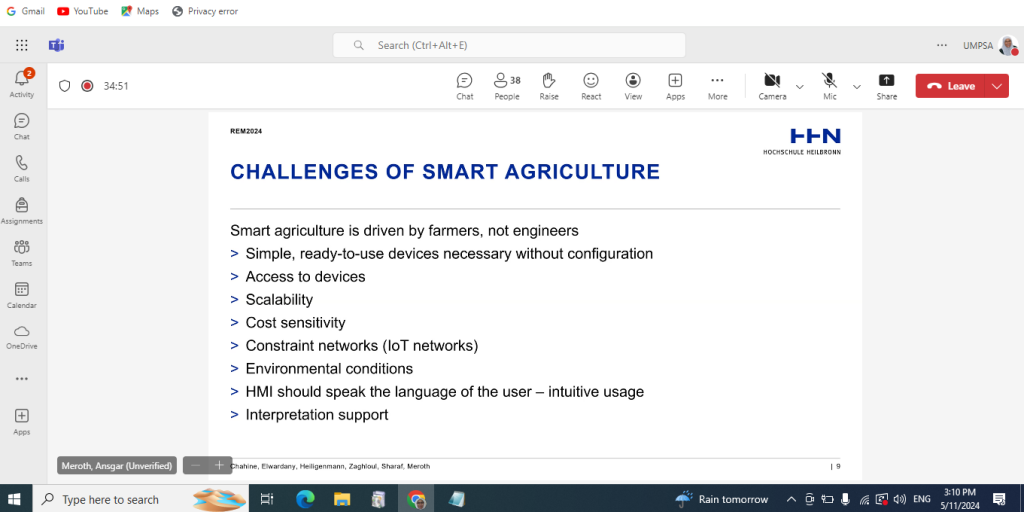
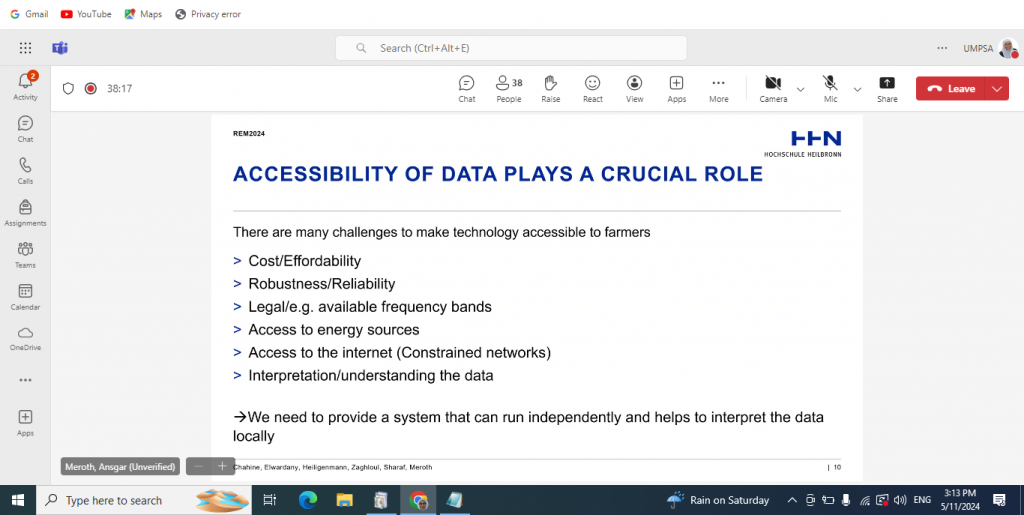
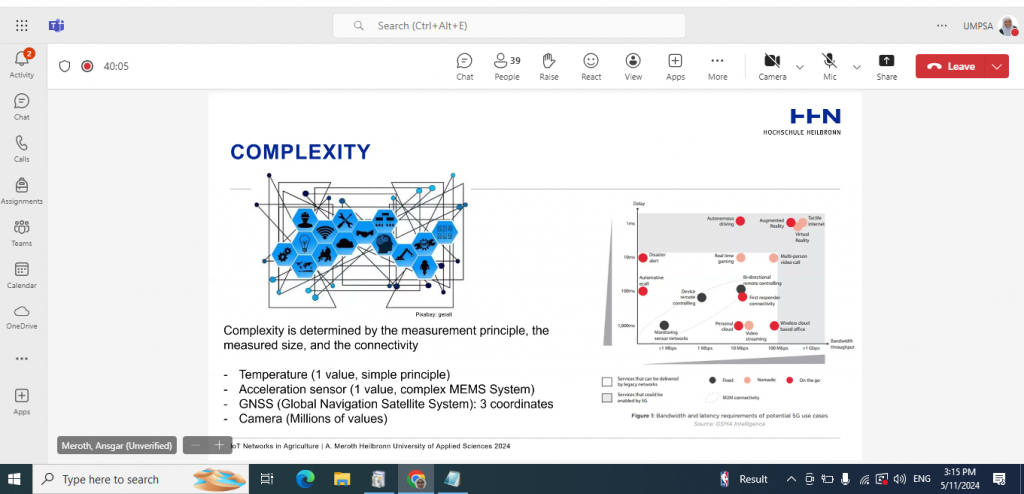
Key Points Covered in the Session
- Overview of IoT Systems
- Prof. Ansgar began with an introduction to IoT, discussing its growth and role in various sectors, especially in agriculture.
- Sensors and Embedded Systems
- He highlighted the importance of selecting appropriate sensors and embedded devices, considering factors like power consumption, accuracy, and environmental durability.
- Network Architecture
- Prof. Ansgar explained the architecture of IoT networks, emphasizing the role of gateways, cloud systems, and edge devices in enabling data processing and analysis closer to the source.
- Class Project Showcase
- Prof. Ansgar concluded with a detailed example of an agricultural IoT project from his own students, demonstrating the integration of real-time monitoring and data analysis to optimize resource use in farming.
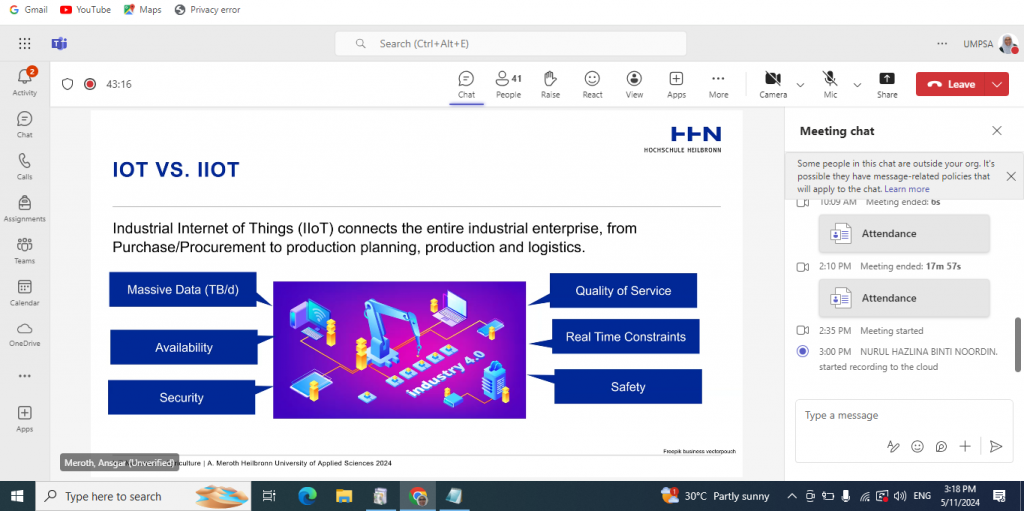
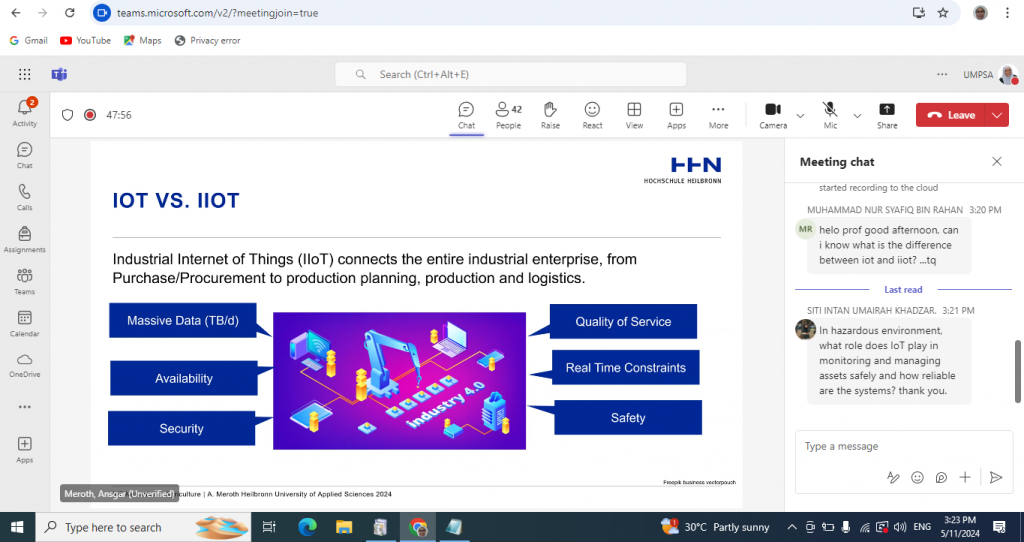
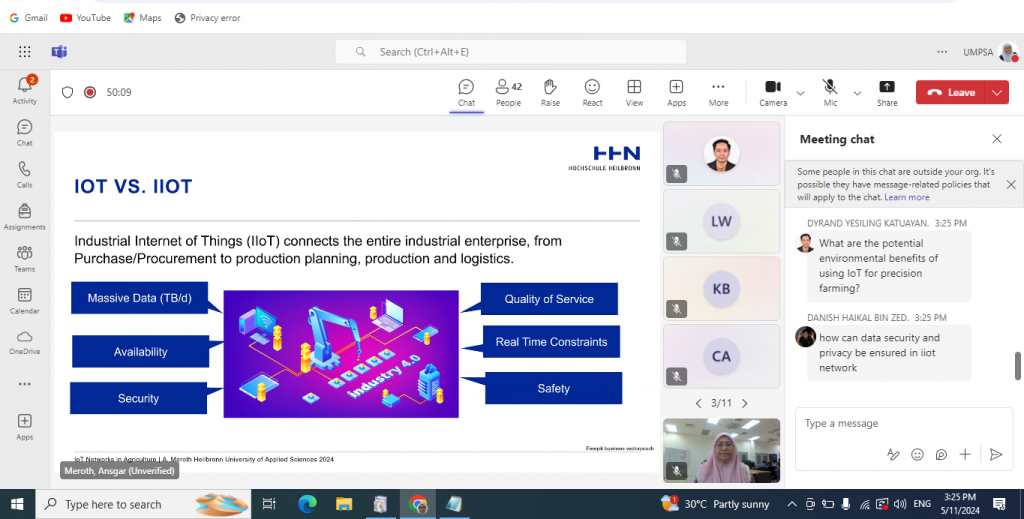
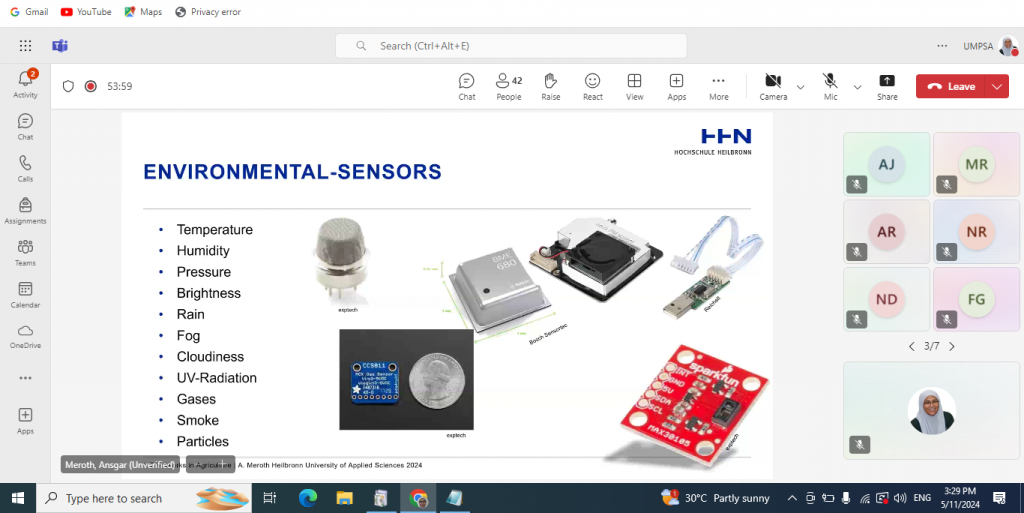
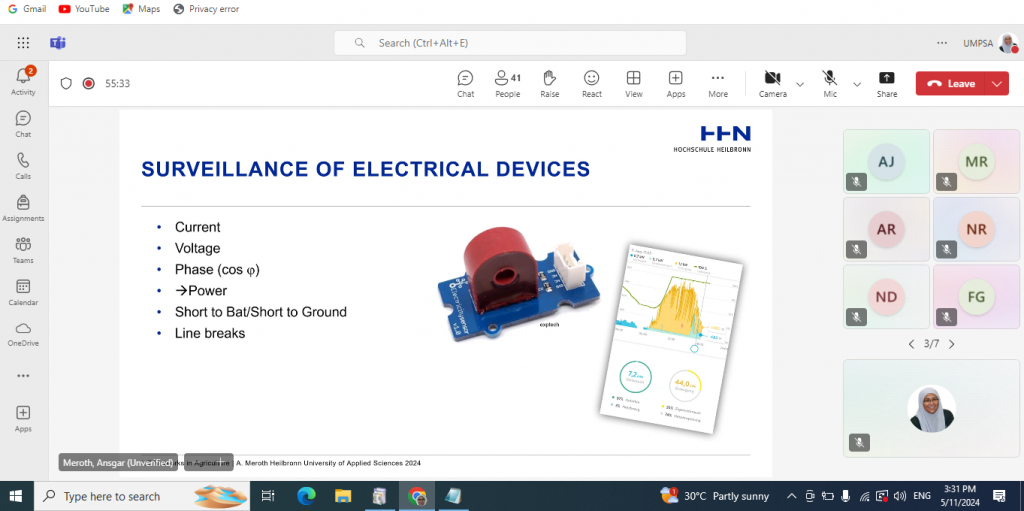
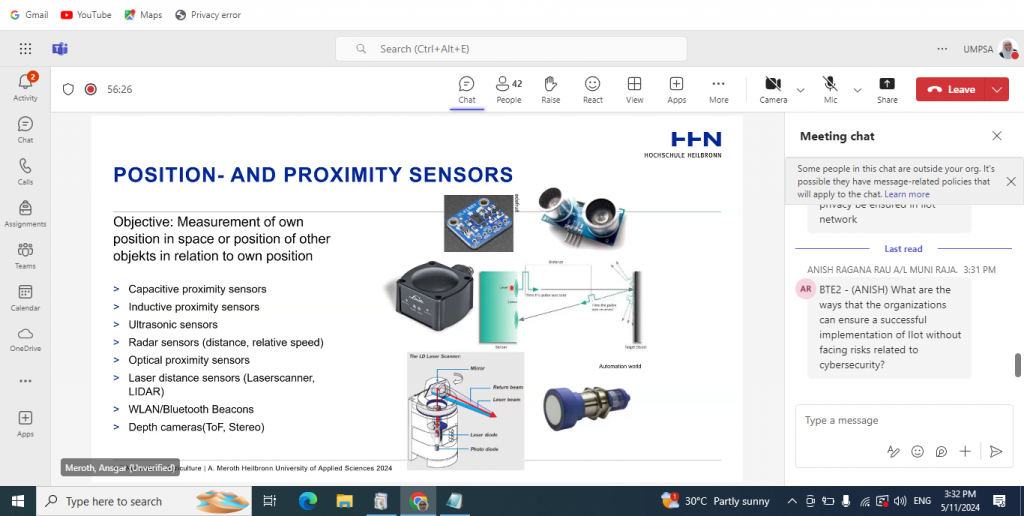
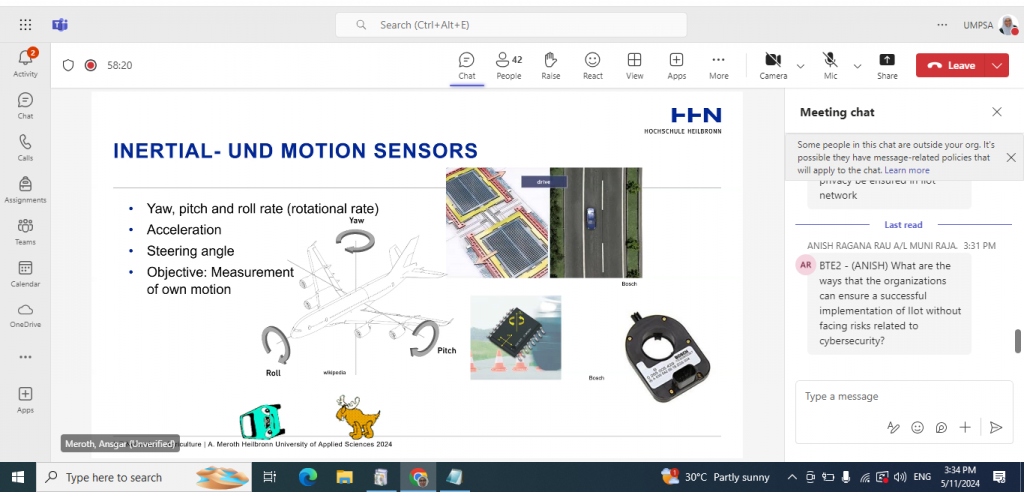
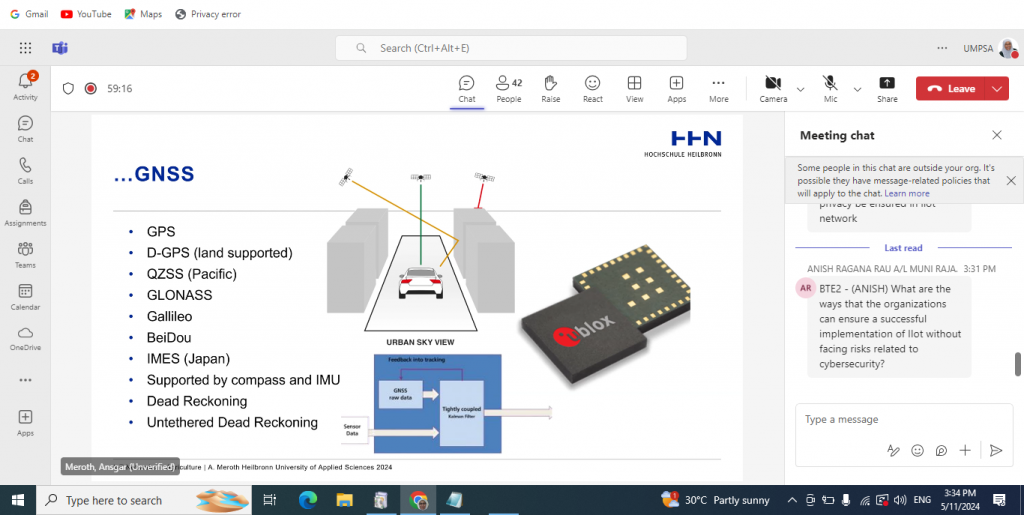
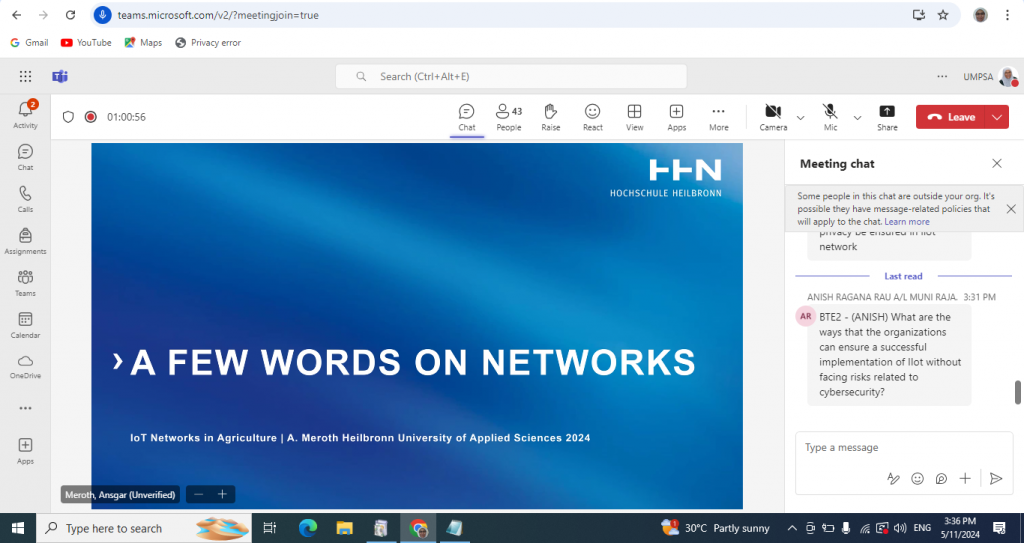
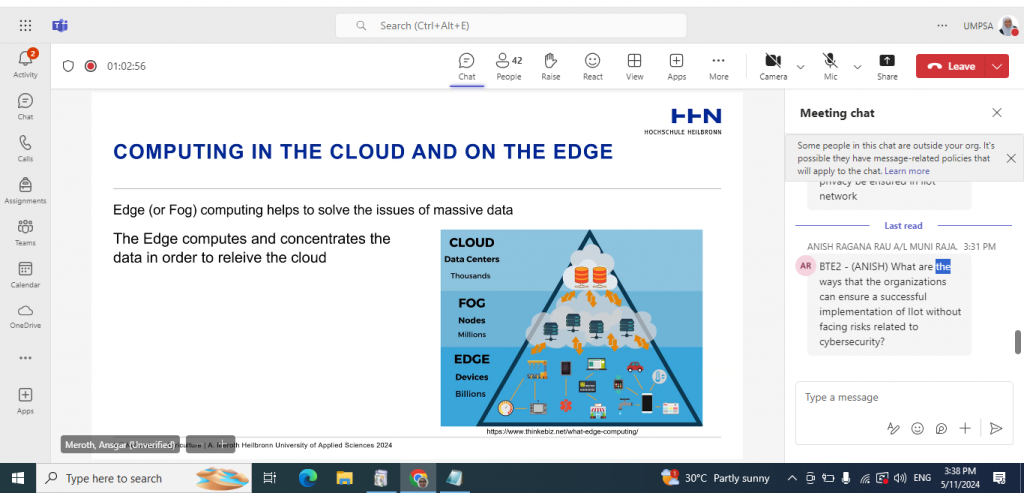
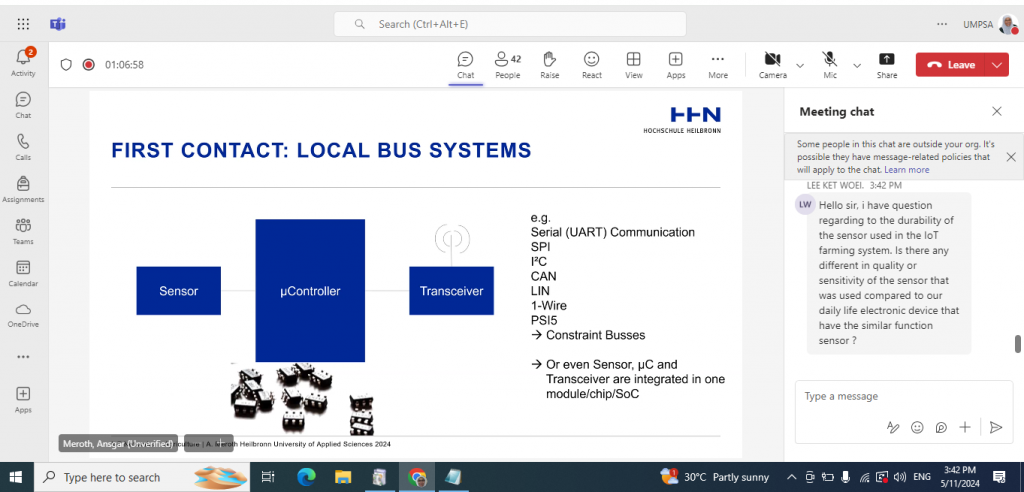
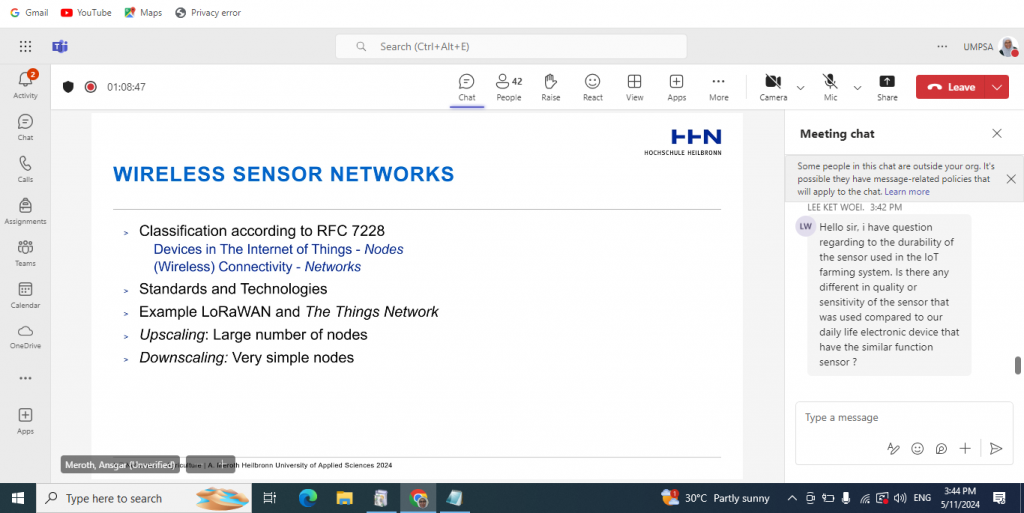
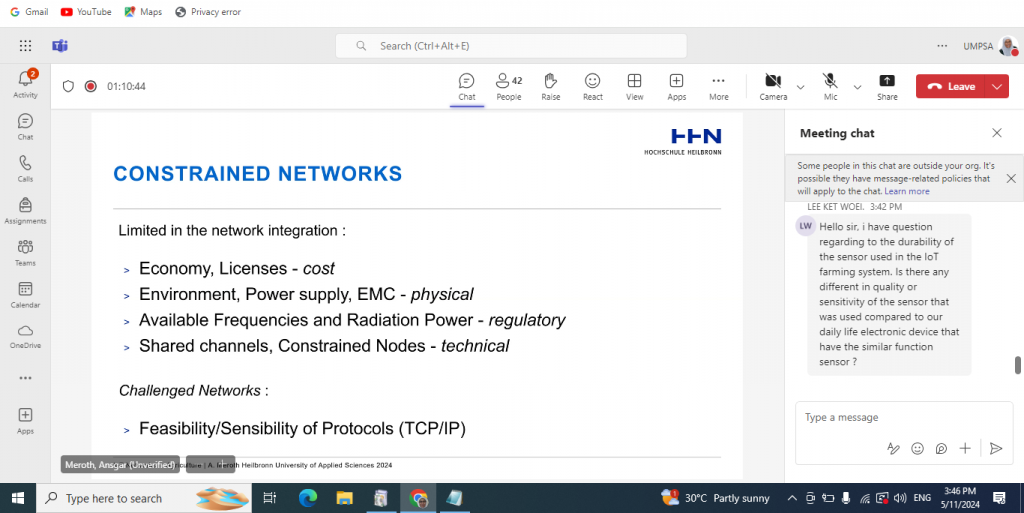
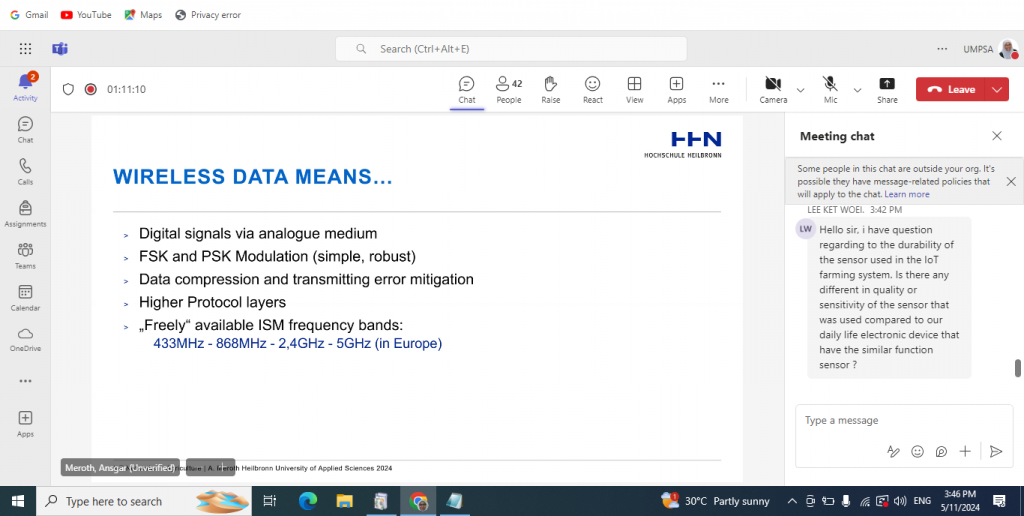
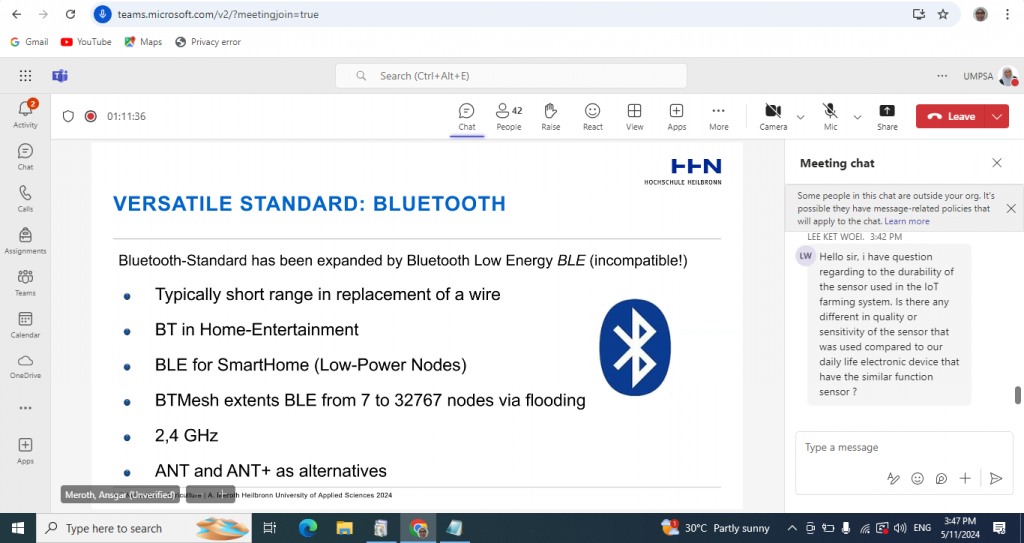
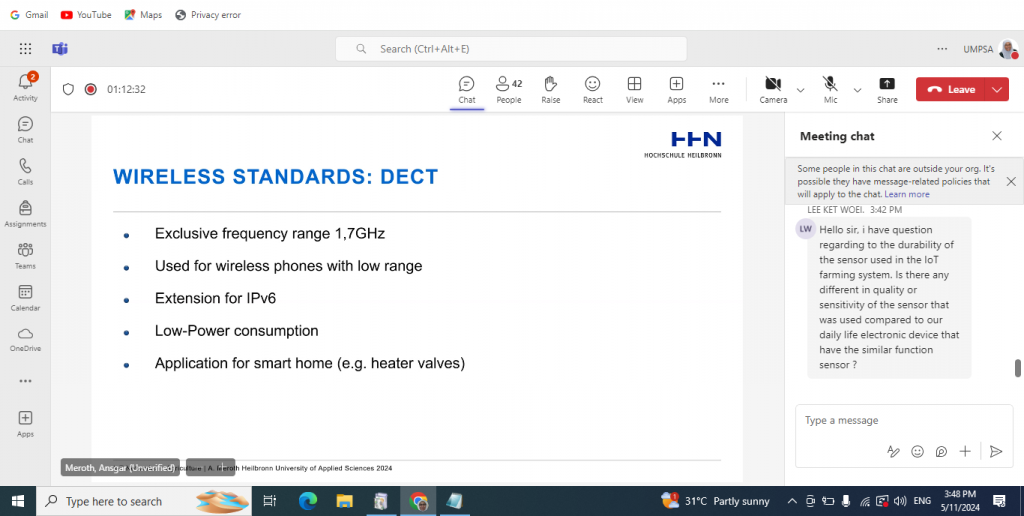
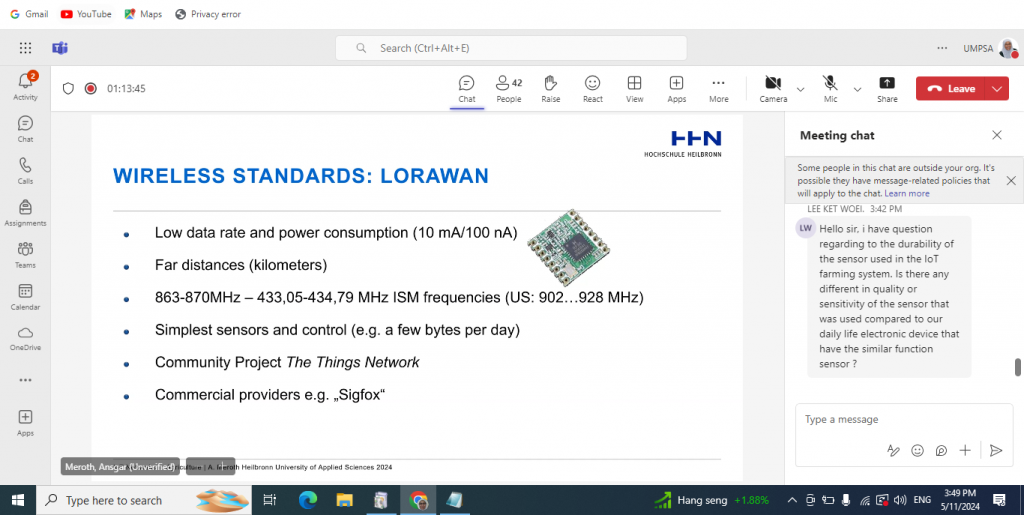
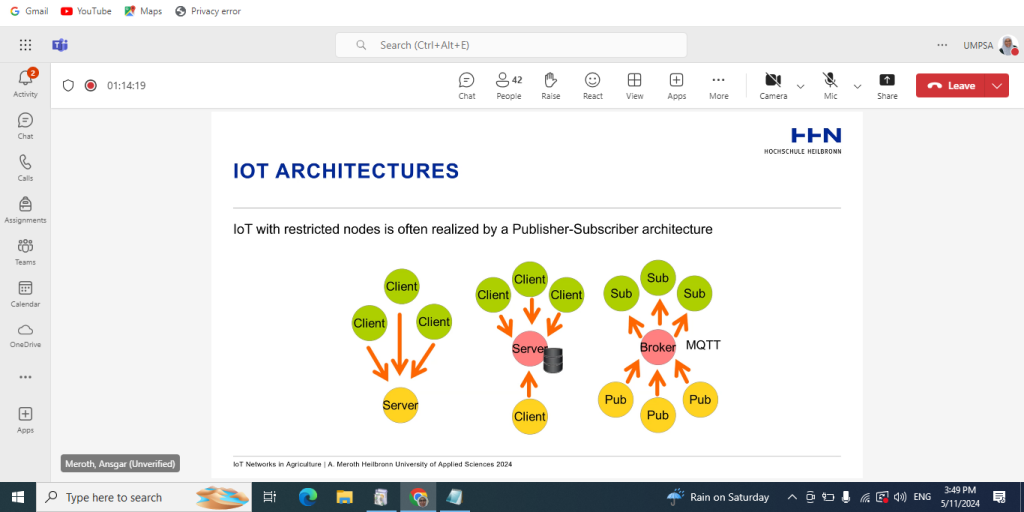
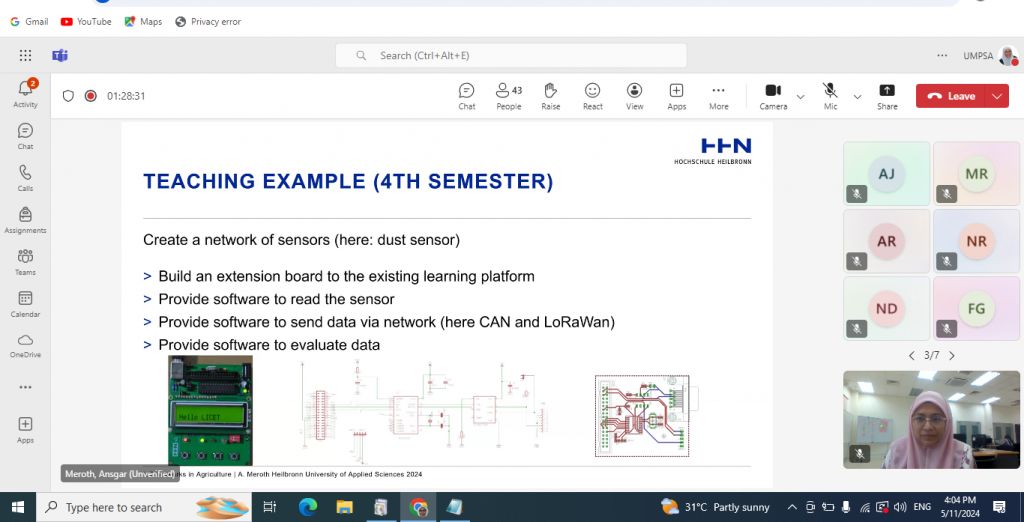
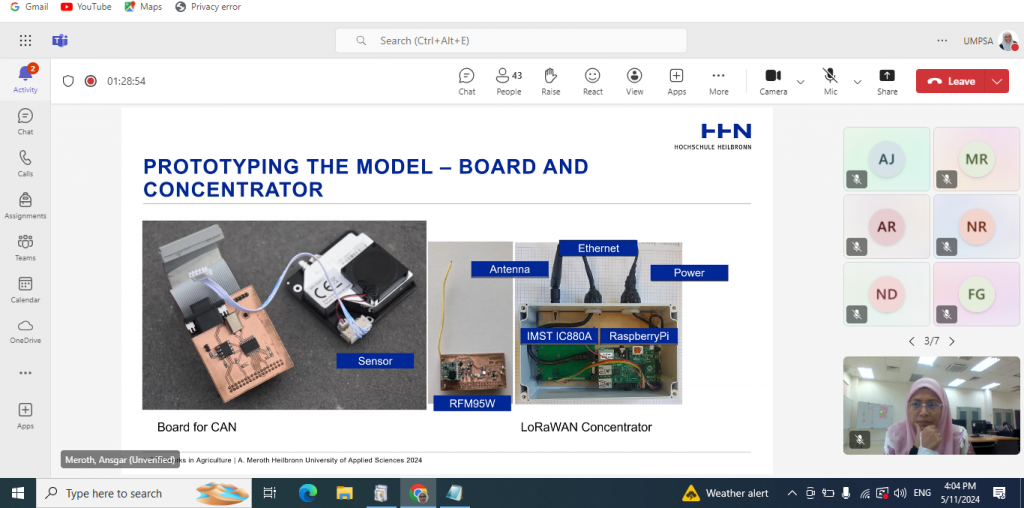
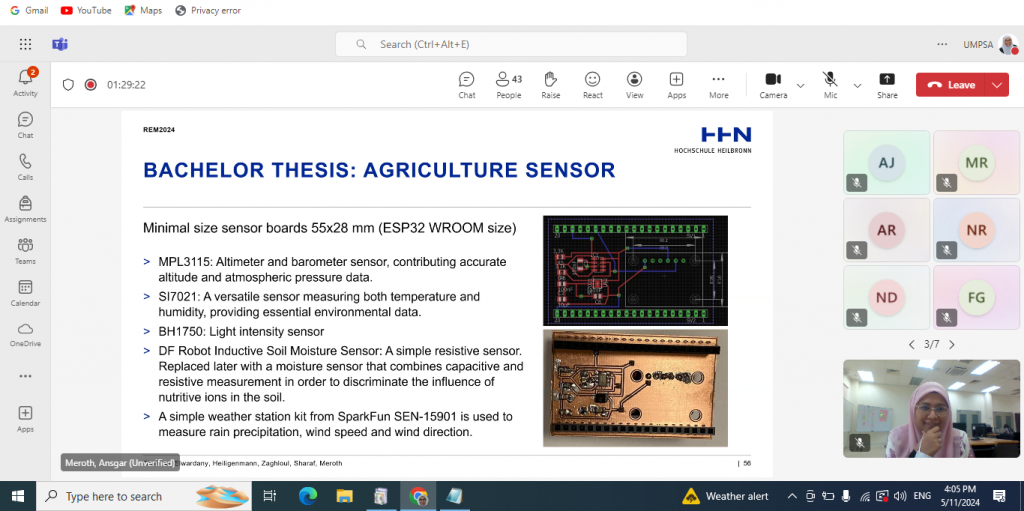
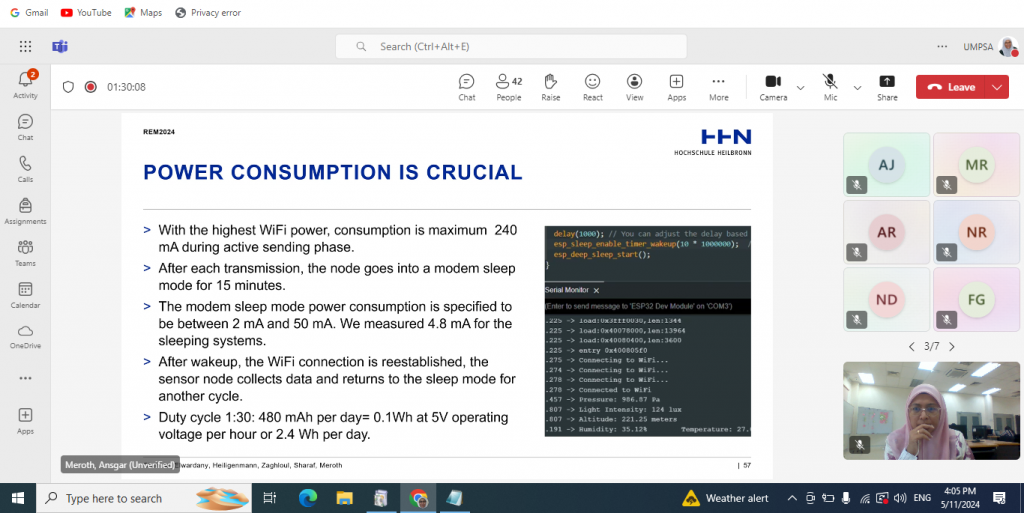
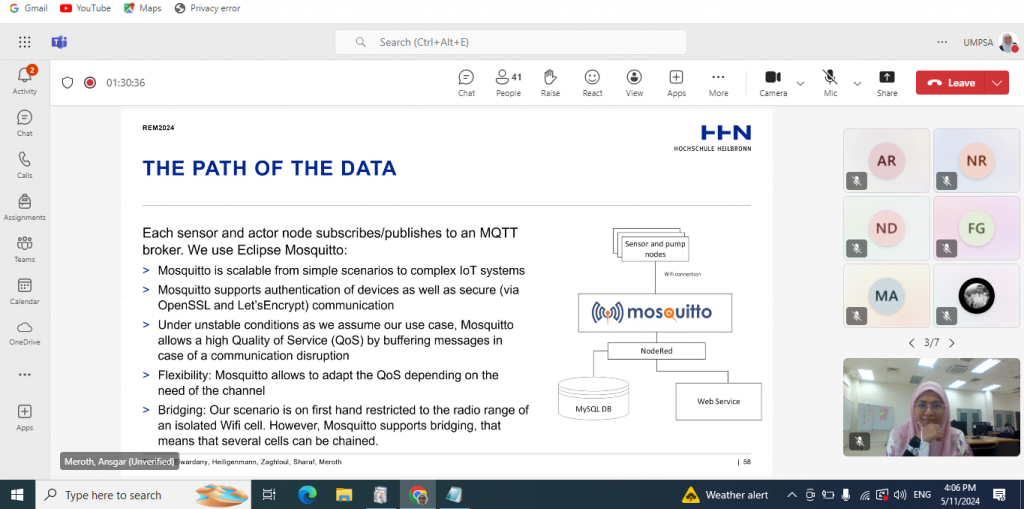
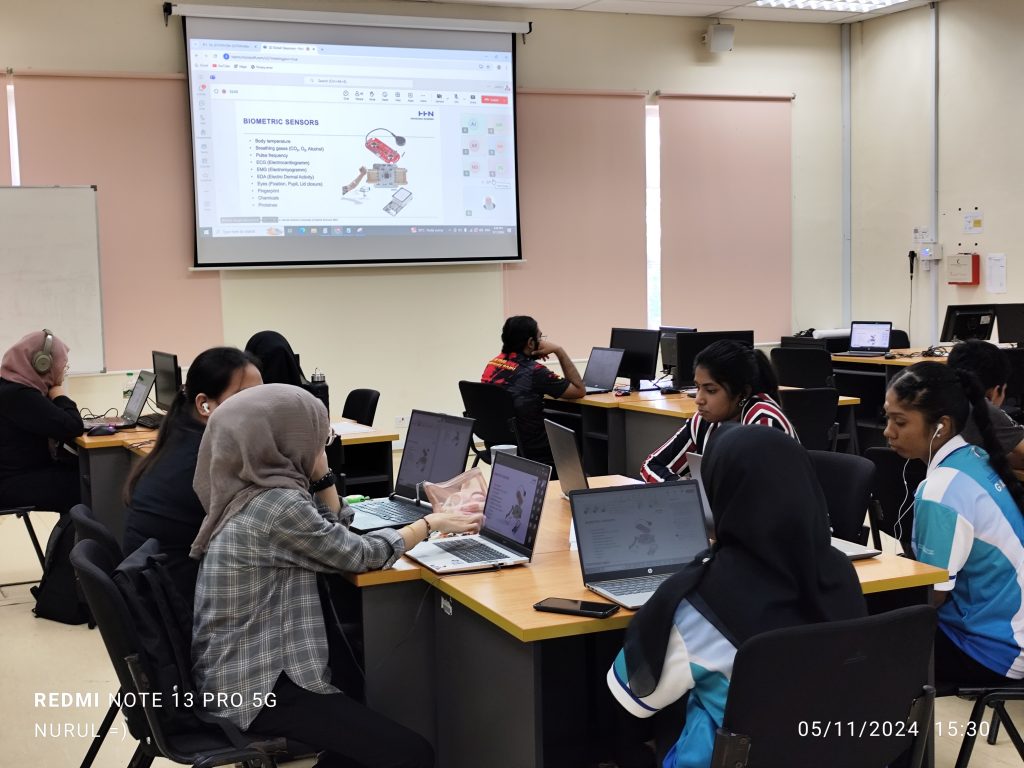
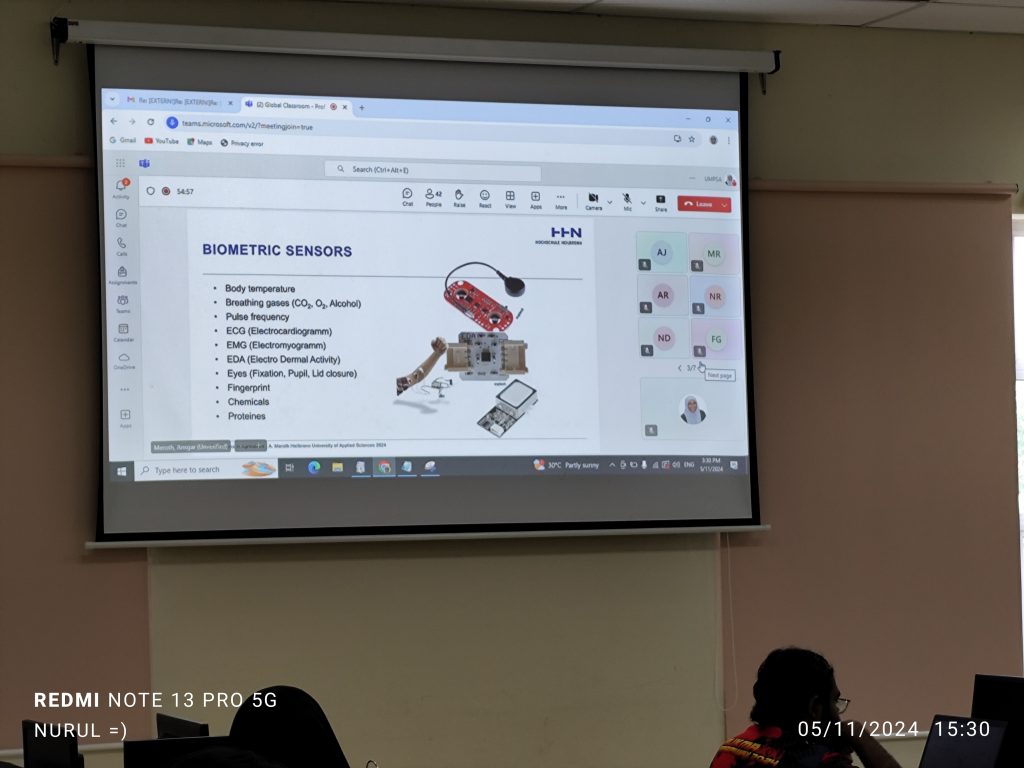
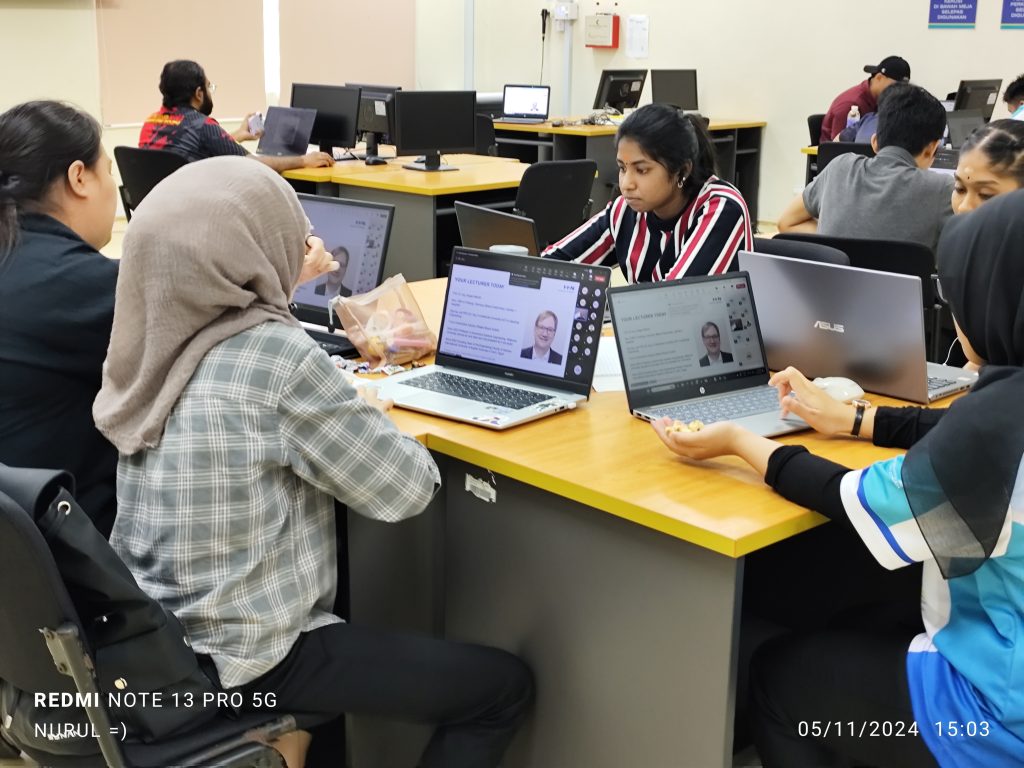
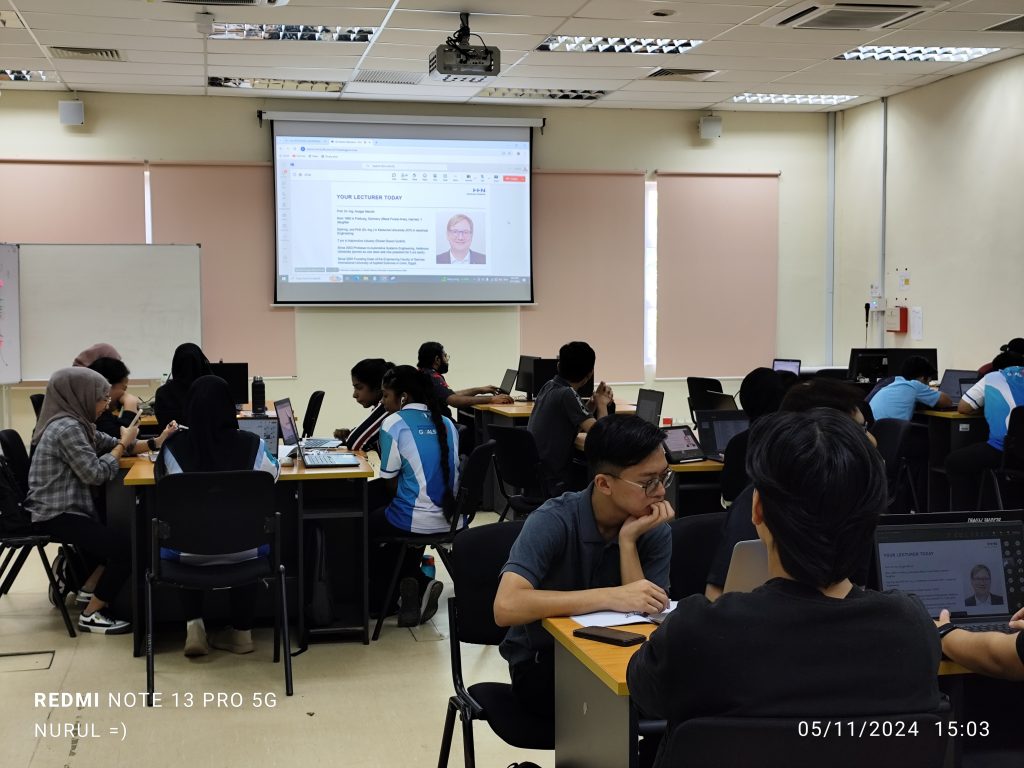
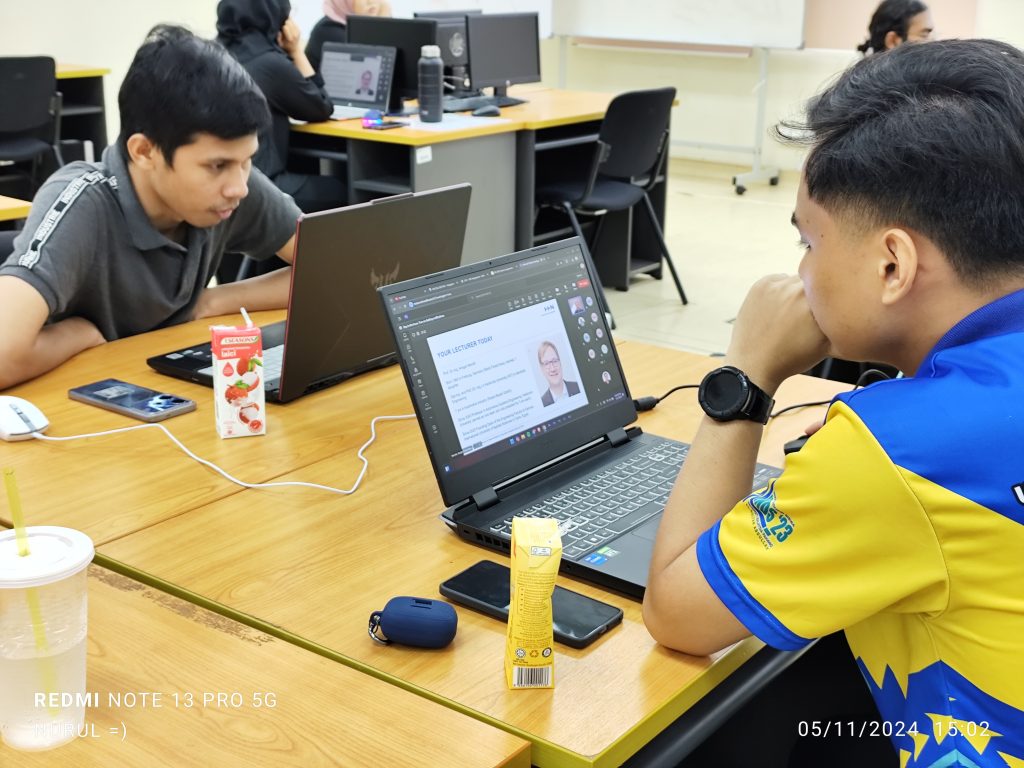
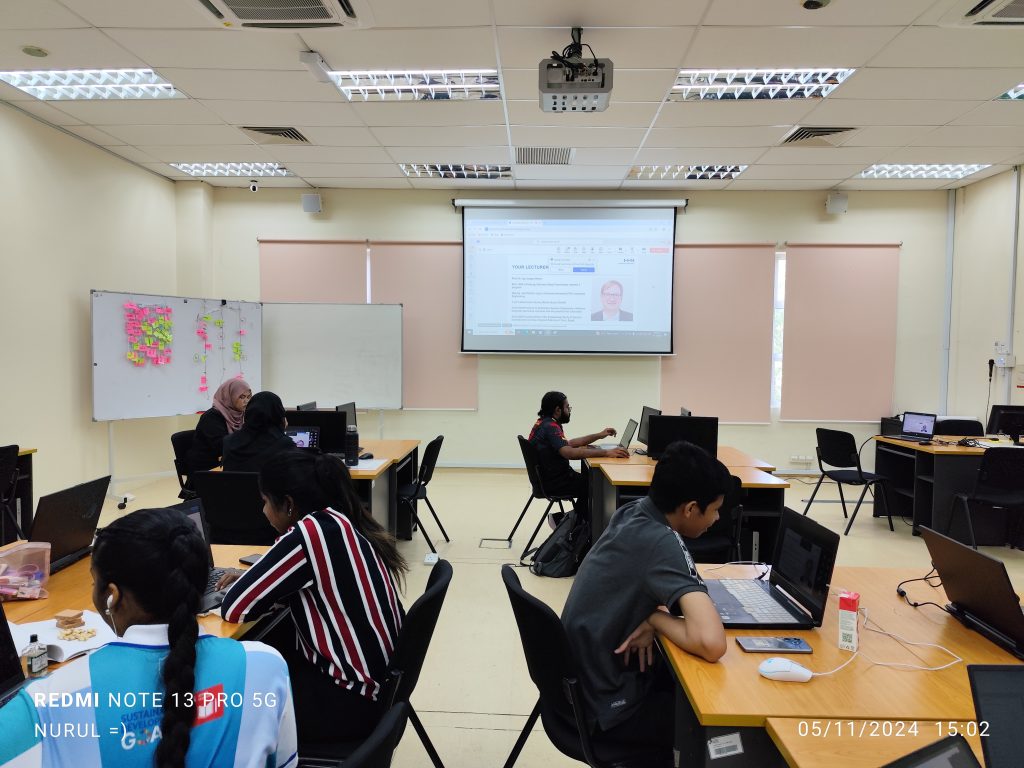
Q&A Session with Prof. Ansgar
The session concluded with an engaging Q&A, where Prof. A addressed various thoughtful questions from students, demonstrating his deep expertise and providing practical guidance. Here are some of the key questions asked and the responses-
1. What are the critical components in developing a reliable and quality IoT solution?
There is a critical need for high-quality sensors, a robust network architecture, and efficient data handling techniques. Reliability can often hinge on the durability of sensors in harsh environments, as well as on efficient protocols for data transmission.
2. What are the considerations for choosing the right sensor in IoT solutions if cost isn’t an issue?
Prioritizing sensor accuracy, durability, and compatibility with other IoT components are recommended. Environmental factors, such as weather and soil conditions, also play a role in sensor selection for agricultural applications.
3. How can we optimize performance in IoT systems with limited power on Raspberry Pi?
Sleep modes and power-efficient protocols, such as MQTT, which is designed for minimal data transfer could be considered. Edge processing can also reduce energy usage by minimizing the amount of data sent to the cloud.
4. How do you ensure reliable data transmission and handling in IoT systems that operate on edge devices?
Using reliable networking protocols and setting up redundant systems to handle transmission errors is a good option, especially in remote areas where network stability may be an issue.
Additional Questions from the Class
1. What is the difference between IoT and IIoT?
While IoT focuses on general applications (e.g., smart homes, agriculture), Industrial IoT (IIoT) emphasizes industrial and manufacturing applications, where the systems must adhere to stringent standards for reliability and security.
2. In hazardous environments, what role does IoT play in monitoring and managing assets safely, and how reliable are these systems?
IoT can monitor environmental conditions and equipment status in real-time, alerting managers to unsafe conditions instantly. With proper system design, these systems can achieve high reliability.
3. What are the potential environmental benefits of using IoT for precision farming?
IoT enables precision resource management, reducing waste and minimizing environmental impact by providing data-driven insights into irrigation, fertilizer use, and crop health.
4. How can data security and privacy be ensured in an IIoT network?
Security is critical in IIoT, where implementing encryption, secure authentication protocols, and regular system audits could be implemented to mitigate risks.
5. How can organizations ensure a successful IIoT implementation without facing cybersecurity risks?
A layered security approach, including firewalls, intrusion detection systems, and ongoing employee training to protect against cybersecurity threats.
6. Are there devices beyond sensors or GPS that can accomplish tasks within IoT or IIoT?
Actuators and drones as examples of devices that can not only sense but also act on data, allowing IoT systems to respond autonomously to changing conditions.
7. What about the durability of sensors used in IoT farming systems? Are they different in quality or sensitivity compared to similar sensors in everyday devices?
In agricultural IoT, sensors are often designed to be more rugged, with higher sensitivity and protective casings to withstand outdoor environments. These are tailored for extended use in tough conditions, unlike everyday consumer electronics.
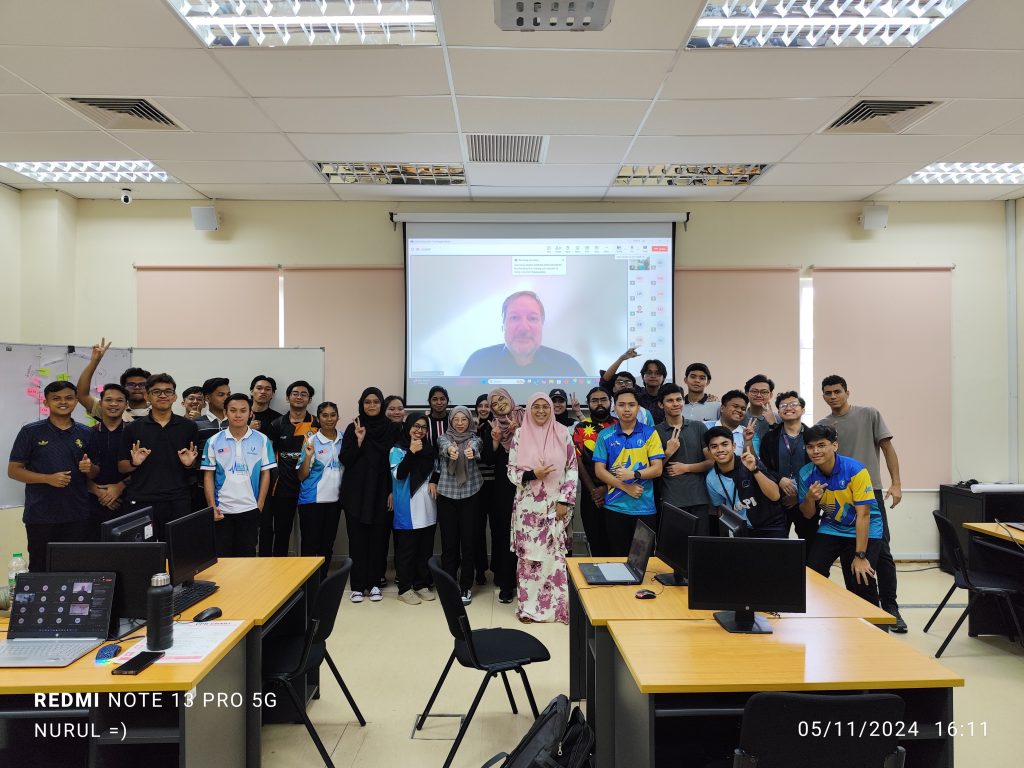
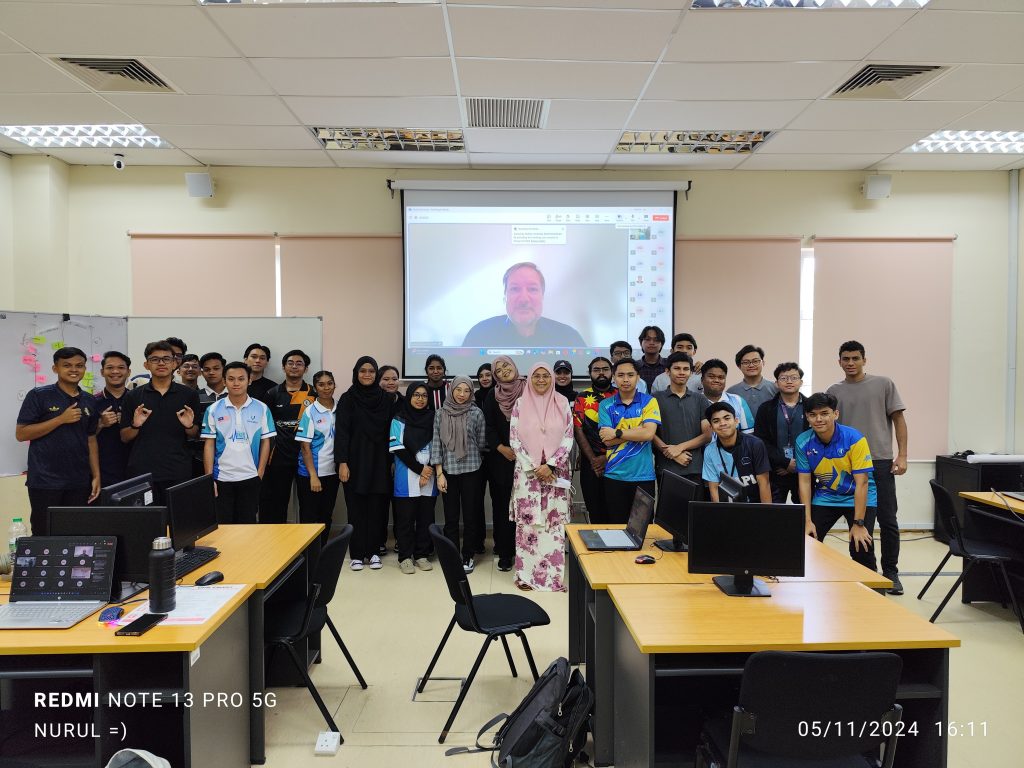
It was both an honor and an incredible experience to host Prof. Ansgar from Helbron University. His insights into the intersection of IoT, embedded systems, and agriculture were inspiring, providing our students with a glimpse into the future of technology-driven farming. Listening to fellow educators motivates me to creating opportunities for global collaboration and learning. As someone who believes deeply in breaking down barriers in education, I look forward to inviting more professors from around the world.
Engaging with international experts not only enriches our knowledge but also motivates us to strive for higher standards in our projects and activities.
Kudos to the students who actively engaged with Prof. Ansgar and asked thoughtful questions during the session. Their curiosity and commitment to learning demonstrated the high standards they are reaching for, making this session even more impactful.
Thank you, Prof. Ansgar, for sharing your expertise and inspiring us to innovate!